Otoplasty in Budapest
Search and Compare the Best Clinics and Doctors at the Lowest Prices for Otoplasty in Budapest

Find the best clinics for Otoplasty in Budapest
With Medijump you can browse 8 facilities offering Otoplasty procedures in Budapest. The cheapest price available is $617 in Budapest. And for the cheapest price globally, prices start from $100 in Egypt.
Otoplasty in Hungary
Price: $ 617
Otoplasty in Budapest
Price: $ 617
Egypt offers the best prices Worldwide
Price: $ 100
From 40 verified reviews
Lambert Andrea, 22 September 2020
I was scheduled for surgery 2 hours after check-in, the treatment was adequate.
Szeptest Cosmetic Surgery, can be found in Central Budapest, Budapest, Hungary and offers its patients Otoplasty procedures as well as 29 other procedures, across 1 different procedure categories. The price of a Otoplasty procedure starts from just ฿27,600, and the average price is around ฿35,413. The lead specialist at the Clinic will be carrying out all the treatments, and Szeptest Cosmetic Surgery is not accredited by any recognised accreditations institutions.
Art Real Plastic Surgery, can be found in Central Budapest, Budapest, Hungary and offers its patients Otoplasty procedures as well as 29 other procedures, across 1 different procedure categories. The price of a Otoplasty procedure starts from just ฿29,600, and the average price is around ฿35,413. The lead specialist at the Clinic will be carrying out all the treatments, and Art Real Plastic Surgery has several accreditations, including: ISAPS (International Society of Aesthetic Plastic Surgery)IPRAS (International Confederation for Plastic Reconstructive & Aesthetic Surgery)
Dolemed Aesthetic Clinic, can be found in Central Budapest, Budapest, Hungary and offers its patients Otoplasty procedures as well as 39 other procedures, across 3 different procedure categories. The price of a Otoplasty procedure varies from ฿32,600 to ฿44,200, and the average price is around ฿35,413. The lead specialist at the Clinic will be carrying out all the treatments, and Dolemed Aesthetic Clinic is not accredited by any recognised accreditations institutions.
Premium Plastic Surgery Clinic - Budapest, can be found in Central Budapest, Budapest, Hungary and offers its patients Otoplasty procedures as well as 49 other procedures, across 9 different procedure categories. The price of a Otoplasty procedure starts from just ฿38,400, and the average price is around ฿35,413. The lead specialist at the Clinic will be carrying out all the treatments, and Premium Plastic Surgery Clinic - Budapest is not accredited by any recognised accreditations institutions.
Dr. Molnar Clinic, can be found in Central Budapest, Budapest, Hungary and offers its patients Otoplasty procedures as well as 37 other procedures, across 2 different procedure categories. The price of a Otoplasty procedure starts from just ฿57,600, and the average price is around ฿35,413. The lead specialist at the Clinic will be carrying out all the treatments, and Dr. Molnar Clinic is not accredited by any recognised accreditations institutions.
Elite Clinic, can be found in Central Budapest, Budapest, Hungary and offers its patients Otoplasty procedures as well as 26 other procedures, across 1 different procedure categories. The price of a Otoplasty procedure varies from £484 to £726, and the average price is around £772. Many medical professionals work at the Clinic, with 6 in total, and Elite Clinic has several accreditations, including: EBOPRAS - European Board of Plastic Reconstructive and Aesthetic SurgeryESPRAS - European Society of Plastic, Reconstructive and Aesthetic SurgeryÁNTSZ - National Public Health and Medical Officer ServiceMagyar Plasztikai Helyreállító és Esztétikai Sebész Társaság
Dr Vincente Rodrigo Facial Specialist, can be found in Central Budapest, Budapest, Hungary and offers its patients Otoplasty procedures as well as 14 other procedures, across 1 different procedure categories. At present, there is no pricing information for Otoplasty procedures at Dr Vincente Rodrigo Facial Specialist. The pricing information is quite specialised, so it's only available on request, and the average price is around $984. The lead specialist at the Hospital will be carrying out all the treatments, and Dr Vincente Rodrigo Facial Specialist has several accreditations, including: ÁNTSZ - National Public Health and Medical Officer ServiceMagyar Plasztikai Helyreállító és Esztétikai Sebész Társaság
Compare Before & After Photos of _procedure_photos.phpOtoplasty
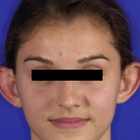
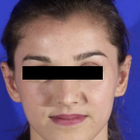
Front view
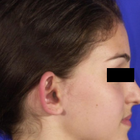
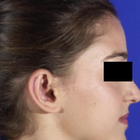
Full-side view
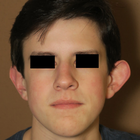

Front view
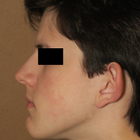
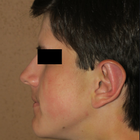
Full-side view
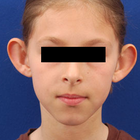
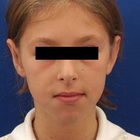
Front view
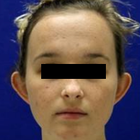
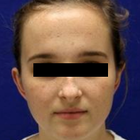
Front view
WHY US?
At Medijump, we're making medical easy. You can search, compare, discuss, and book your medical all in one place. We open the door to the best medical providers worldwide, saving you time and energy along the way, and it's all for FREE, no hidden fees, and no price markups guaranteed. So what are you waiting for?

Free

Best Price

Widest Selection

Risk-Free
What you need to know about Otoplasty in Budapest

Otoplasty, also referred to as cosmetic ear surgery, is a type of cosmetic procedure to change the size, shape, or position of the ear. It is performed on the visible part of the outer ear, called auricle. Some people choose to have the surgery to correct odd-shaped ears due to an injury or birth defect. Others have it because they are concerned with how their ears protrude too far from their head. Otoplasty can be performed at any age after the ears have reached their full size, generally after age 5. In some cases, the surgery may be done as early as age 3.
There are several types of otoplasty. The following are the most common:
- Ear pinning draws the ears closer to the head. It is usually done on people whose ears stick out too far from their head.
- Ear augmentation is ideal for individuals whose ears are small or have not completely developed. This type of otoplasty can increase the size of the outer ear.
- Ear reduction is usually done on people with macrotia, which is a condition when the ears are larger than normal. Otoplasty can reduce the size of the ears.
What does a Otoplasty Procedure Involve?
Otoplasty is typically carried out under local anesthesia with a sedative, so you will be awake but you will not feel any pain. In some cases, general anesthesia may be used, typically for younger children.
The techniques used by your surgeon vary based on the type of otoplasty you are having. In general, your surgeon makes an incision either within the inner creases of your ears or on the backs of your ears. Then, your surgeon manipulates the tissue of the ear, which may include removal of cartilage or skin, grafting of cartilage to the ear, or folding and shaping of cartilage using permanent stitches. Once your surgeon is done correcting the shape, size, and position of your ears, the incisions are closed with stitches.
How Long Should I Stay in Budapest for a Otoplasty Procedure?
Otoplasty can take between 1 and 3 hours to perform, depending on the complexity and the specifics of the procedure. It is typically done as an outpatient procedure, which means you can leave the hospital on the same day. It is recommended that you stay in Budapest for 7 more days for follow-up checkups and removal of stitches.
What's the Recovery Time for Otoplasty Procedures in Budapest?
The recovery period may vary from one person to another. You may experience numbness for several weeks, and mild bruising for about 2 weeks. For several months, your ears may feel stiff and sore.
You should be able to go back to work and resume your normal activities, including exercise, within one to two weeks after surgery. Physical contact sports, such as rugby, football, or judo, should be avoided for at least 3 months. You should also avoid swimming for up to 8 weeks following your otoplasty.
What sort of Aftercare is Required for Otoplasty Procedures in Budapest?
Your surgeon will provide post-operative instructions. Make sure to follow the instructions carefully to promote smooth and quick recovery. You should rest with your head elevated on 2-3 pillows to minimize swelling. It is recommended that you eat a light, soft, and cool diet for several days. Take pain medication as prescribed by your doctor. Avoid sleeping on your side or rub the incisions to keep pressure off your ears. Consider wearing shirts with loose-fitting collars or button-down shirts.
What's the Success Rate of Otoplasty Procedures in Budapest?
Otoplasty is a safe and effective procedure, with high satisfaction rates. More than 90% of people who had the procedure claimed to be extremely happy with the results. Note that it may take some time for the result to be fully visible.
While it is a safe procedure, you still need to be aware of possible risks and complications that otoplasty carries. These include bleeding, hematoma formation, infection of the skin, infection of the cartilage of the ear, permanent or temporary numbness around the affected area, scar or keloid formation, unfavorable results, prolonged pain, narrowing of the external ear canal, impaired healing, changes in skin sensation, asymmetry, and overcorrection.
Are there Alternatives to Otoplasty Procedures in Budapest?
There are not many viable alternatives to otoplasty as of yet. One of the most popular alternatives is nonsurgical otoplasty, which does not require any incisions. The procedure uses special sutures to pin the ears back and achieve a more symmetrical look. These sutures are woven into the ears and will remain in place permanently. They are also virtually invisible, so the results will look natural.
For babies under three months old with prominent ears, ear-molds can be taped to their ears to reshape the ears without surgery. This type of treatment typically takes about six to eight weeks.
What Should You Expect Before and After the Procedure
Before otoplasty, you may have prominent or large ears or other deformity caused by an injury or birth defect that bothers you. Some people also feel self-conscious and embarrassed by the shape, size, and position of their ears. After the procedure, your ears will be corrected. Small or underdeveloped ears will be augmented to increase the size, the size of large ears will be reduced, and prominent ears will be drawn closer to the head. Your appearance will improve and you may feel more confident.
Whilst the information presented here has been accurately sourced and verified by a medical professional for its accuracy, it is still advised to consult with your doctor before pursuing a medical treatment at one of the listed medical providers
No Time?
Tell us what you're looking for and we'll reachout to the top clinics all at once
Enquire Now

Popular Procedures in Budapest
Prices Start From $28

Prices Start From $1,945

Prices Start From $120

Prices Start From $275

Recommended Medical Centers in Budapest for Otoplasty

- Interpreter services
- Translation service
- Religious facilities
- Medical records transfer
- Medical travel insurance
- Health insurance coordination
- TV in the room
- Safe in the room
- Phone in the room
- Private rooms for patients available

- Interpreter services
- Translation service
- Religious facilities
- Medical records transfer
- Medical travel insurance
- Health insurance coordination
- TV in the room
- Safe in the room
- Phone in the room
- Private rooms for patients available

- Interpreter services
- Translation service
- Religious facilities
- Medical records transfer
- Medical travel insurance
- Health insurance coordination
- TV in the room
- Safe in the room
- Phone in the room
- Private rooms for patients available

- Interpreter services
- Translation service
- Religious facilities
- Medical records transfer
- Medical travel insurance
- Health insurance coordination
- TV in the room
- Safe in the room
- Phone in the room
- Private rooms for patients available

- Interpreter services
- Translation service
- Religious facilities
- Medical records transfer
- Medical travel insurance
- Health insurance coordination
- TV in the room
- Safe in the room
- Phone in the room
- Private rooms for patients available

- Interpreter services
- Translation service
- Religious facilities
- Medical records transfer
- Medical travel insurance
- Health insurance coordination
- TV in the room
- Safe in the room
- Phone in the room
- Private rooms for patients available

- Interpreter services
- Translation service
- Religious facilities
- Medical records transfer
- Medical travel insurance
- Health insurance coordination
- TV in the room
- Safe in the room
- Phone in the room
- Private rooms for patients available

- Interpreter services
- Translation service
- Religious facilities
- Medical records transfer
- Medical travel insurance
- Health insurance coordination
- TV in the room
- Safe in the room
- Phone in the room
- Private rooms for patients available

- Interpreter services
- Translation service
- Religious facilities
- Medical records transfer
- Medical travel insurance
- Health insurance coordination
- TV in the room
- Safe in the room
- Phone in the room
- Private rooms for patients available

- Interpreter services
- Translation service
- Religious facilities
- Medical records transfer
- Medical travel insurance
- Health insurance coordination
- TV in the room
- Safe in the room
- Phone in the room
- Private rooms for patients available
Otoplasty in and around Budapest
About Budapest
Budapest is the capital of Hungary and with A population of over 1.7 million, it is the most populous city in the country. Budapest is made up of three unified cities, Buda and Óbuda on the west bank of Danube and Pest on the east bank. The city is known as one of the most beautiful cities in Europe. Its historic monuments, charming architecture, healing thermal waters, wonderful food, and lively nightlife draw millions of people each year.
Nowadays, an increasing number of people have chosen Budapest as their medical tourism destination thanks to its well-known excellent healthcare. Dental treatments along with cosmetic and plastic surgery are the most popular treatment that attracts medical tourists to Budapest. Premium Plastic Surgery Clinic and Dr. Molnar Clinic are two of the highest ranked medical facilities in Budapest. Medical tourists come to Budapest for the following reason:
- Experienced, highly qualified doctors and surgeons.
- The best and most modern medical facilities.
- A friendly environment with English speaking staff.
- Medical treatment at significantly lower prices.
- Beautiful city to enjoy while recovering.
Popular Areas in Budapest
There are many places to explore in Budapest. The city is home to several UNESCO World Heritage Sites, Danube Panorama and Castle district is the most beautiful and romantic parts of Budapest with countless historical monuments; Andrássy Avenue and Heroes Square are home to the most impressive buildings such as the State Opera House; The banks of the Danube river is a great place to see many of Budapest’s best sights.
The Hungarian Parliament Building, one of the largest building in Hungary, was designed in the Gothic Revival style. The building gives an enchanting view from every angle, especially from the other side of Danube when tourists can see the whole building. Tourists can also go to Castle Hill, one of the most visited places in Budapest with beautiful buildings that date back to the 14th and 15th centuries.
To escape the city, visit City Park where you will find a zoo, a replica of Transylvanian Vajdahunyad Castle, and the Széchenyi Bath. For visitors who wish to shop, try Ecseri Flea Marker, a fantastic flea market to find a bargain.
Weather and Climate in Budapest
Budapest has four distinct seasons.
- Summer in Budapest tends to be nice and warm with an average temperature ranging between 23 to 28 °C (73 – 82 °F). Summer lasts from May until mid-September. Heavy showers usually occur in May and June. Many tourists choose the summer to visit the city.
- The autumn in Budapest has moderate temperature with little rains and long sunny days, autumn starts from mid-September to late October.
- Winter can be really cold with only a little sunshine; the average temperature is 3 to -7 °C (27 to 19 °F). Winter lasts from November to March.
- Spring in Budapest is said to be one of the most beautiful times in the city when the green spaces are in full bloom. Spring starts from March to April and sees a rapid increase in the temperature.
Getting Around in Budapest
Ferenc Liszt International Airport (commonly referred to as “Ferihegy”) is the main airport in Budapest and in Hungary. The airport connects Budapest with many cities around the globe, mainly Europe, Africa, the Middle East, and North America. There are several budget airlines that operate flights in this airport such as Wizz Air, EasyJet, and Ryanair.
To get to the city center, tourists can take a taxi or a bus. Taxis are relatively cheap, always make sure to use regulated taxis to ensure your safety. The fare for taxis is 300 HUF/Km (1.03 USD). A ride to Budapest from Ferenc Liszt International Airport usually cost around 7200 HUF (24.8 USD).
The bus is the cheapest option to get to the city center. Budapest’s airport shuttle bus (100E) connects Ferenc Liszt Airport with the city center (Deák Ferenc Square). The trip takes about half an hour. Purchase a ticket at the airport post office, BKK customer points in arrivals halls, the newsagents, and from the ticket machine at the bus stops. Bus drivers also sell tickets for 450 HUF (1.60 USD). It is better and simpler to purchase daily or multi-day passes which are valid for an unlimited number of trips within their validity periods. The multi-day pass costs 1650 HUF (6.15 USD).
The best way to explore Budapest is by walking because most tourist sites are within walking distance. An alternative to walking is cycling. Budapest offers a bicycle sharing system called BuBi. Metro, trams, trolleybuses, buses, and the HÉV suburban train line are also available to get around Budapest.
Tourist Visas in Budapest
Citizens of the European Union, the United States, and Canada can enter and stay in Hungary without a visa for up to 90 days. Citizens of EU/EEA members and 33 countries are granted visa-free entry for a maximum period of 90 days. The only condition is to have a passport valid for at least three months. Other foreign citizens need to apply and obtain a visa before entering the country.
As a part of the Schengen Agreement, holders of the Schengen Visa do not need to apply for a new visa. The Schengen Visa is only issued to citizens of countries who are required to obtain a visa before entering Europe.
Additional Information
- Local Currency: The official currency is the Hungarian Forint (HUF). 1 USD is equivalent to 290 HUF.
- Money & Payments: Tourists can withdraw money from ATMs. Credit cards (mainly Visa, MasterCard, and American Express) are accepted in restaurants, hotels, and even most taxis. There are several hotels and guesthouses that will accept euros. Tipping is always appreciated but not necessary.
- Local Language: The official language is Hungarian and is spoken by most of the population. Most people, especially in tourist areas, will know sufficient English.
- Local Culture and Religion: Budapest is home to one of the most populous Christian communities in Central Europe. Judaism is also a significant religion.
- Public Holidays: Budapest celebrates Christian holy days as in the rest of Hungary. The city hosts many festivals around the year such as Budapest Spring Festival, Budapest Easter Festival, Music Festival in Spring, as well as Food and Frink Festivals. The date for these festivals may differ from year to year.
Popular Searches
- Plastic Surgery in Thailand
- Dental Implants in Thailand
- Hair Transplant in Thailand
- Breast Augmentation Thailand
- Gastric Sleeve in Thailand
- Gender Reassignment Surgery in Thailand
- Laser Hair Removal in Bangkok
- Botox in Bangkok
- Dermatology in Bangkok
- Breast Augmentation in Bangkok
- Coolsculpting in Bangkok
- Veneers in Turkey
- Hair Transplant in Turkey
- Rhinoplasty in Turkey
- Stem Cell Therapy in Mexico
- Rhinoplasty in Mexico
- Liposuction in Mexico
- Coolsculpting in Tijuana
- Rhinoplasty in Korea
- Scar Removal in Korea
- Gastric Sleeve in Turkey
- Bone Marrow Transplant in India
- Invisalign in Malaysia
- Plastic Surgery in the Dominican Republic
- Tummy Tuck in the Dominican Republic
- Plastic and Cosmetic Surgery in Poland
- Rhinoplasty in Poland
- Hair Implant in Poland
- Dental Implants in Poland
- IVF in Turkey







